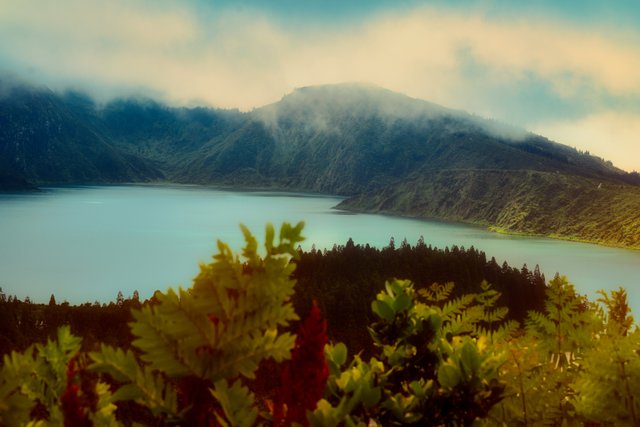📷Curiosities about the Azores Archipelago
Italy Community
✅ 1918 | The Naval Battle of the High-Seas Patrol Ship Augusto de Castilho
On March 9, 1916, when Germany declared war on Portugal, the Portuguese government decided to requisition several merchant and fishing vessels to be armed and integrated into the Portuguese Navy.
One of those vessels was the fishing trawler Elite, owned by Parceria Geral de Pescarias, Limitada. Built in 1909 in English shipyards, it was the first Portuguese trawler designed for cod fishing. The ship was requisitioned on June 13, 1916, reclassified as a high-seas patrol vessel—though commonly referred to as a minesweeper—and renamed Augusto de Castilho, designated for patrol and ocean escort missions.
After nearly two years in service and having already encountered German submarines, on October 11, 1918, the Augusto de Castilho, commanded by First Lieutenant José Botelho de Carvalho Araújo, arrived in Funchal while escorting the passenger ship Beira of the National Navigation Company.
There, Commander Carvalho Araújo received orders to escort the passenger liner San Miguel of the Insulana Shipping Company, carrying 206 passengers bound for Ponta Delgada. The escort mission began on the afternoon of October 13.
The voyage was approximately 500 miles, expected to take just over two days. At around 6:00 a.m. on October 14, the German cruiser-submarine U-139 was spotted about 600 meters off the port quarter of San Miguel. The vessels were then roughly halfway between Madeira and Santa Maria Island.
Despite the overwhelming imbalance of firepower, Commander Carvalho Araújo did not hesitate. On one side was a modest ship displacing 800 tons, 48 meters in length, manned by 47 crew members, and armed with two Hotchkiss guns (65mm and 47mm). On the other side was a formidable enemy: a cruiser-submarine displacing 1,930 tons, 102 meters long, with 80 crew members, six torpedo tubes, 25 torpedoes, and two 150mm Krupp guns.
“To protect San Miguel and give her time to escape, Augusto de Castilho attacked the German submarine—first with its 47mm gun, and then, sailing directly at the enemy, opened fire with its 65mm weapon.”
Despite being quickly hit by the German artillery and sustaining its first casualties, the ship continued fighting. For about two hours, Augusto de Castilho bravely held off the U-139, allowing San Miguel to safely escape toward Ponta Delgada, where she arrived the next morning.
“The liner is safe,” the commander told his executive officer.
Once its ammunition was exhausted, the priority turned to rescuing the crew. But in a final German volley, Commander Carvalho Araújo was mortally wounded. The battle resulted in six deaths, including the commander, and fifteen injured.
A group of 29 crew members, including 11 wounded, was authorized to abandon ship in the lifeboat. Either by their own decision or under orders from the Germans, they sailed away and eventually reached Santa Maria Island about 50 hours later.
Twelve other survivors—including Midshipman Manuel Armando Ferraz, the ship’s executive officer—remained in the water, clinging to buoys and debris, having been ignored by their comrades in the lifeboat for reasons that were never explained.
About two hours after the battle, in an unusual humanitarian gesture, the German submarine returned. The crew allowed the survivors to recover a small boat still aboard the Augusto de Castilho, treated the wounded, and then released the group adrift with only oars and minimal provisions.
Midshipman Ferraz would later write:
“Around 6 p.m., in the direction where our ship had been, a giant column of water and smoke rose. It was without a doubt our ship being sunk by an explosion. Tears came to my eyes…”
That group of twelve men rowed day and night, heading north without any navigation instruments, only their will to survive and hope of reaching the Azores. They had two oars, a little water and food, and no certainty of their course.
“It’s the 19th, 11 a.m. Sailor Manuel Fernandes was rowing standing, facing the bow. Suddenly he cries out, tears in his eyes: ‘Land!’ Indeed, it was land. The joy of the crew was indescribable. We rowed like madmen… Twenty-four more hours of suffering to go.”
Finally, on October 20, they landed at Ponta do Arnel, on the eastern tip of São Miguel Island, where they were warmly received by locals in the Nordeste region.
They had rowed approximately 200 miles over six days and six nights.
The newspaper Açoriano Oriental reported:
“The minesweeper performed a great service by saving the passenger liner and its occupants. It bravely resisted the submarine until it ran out of ammunition, allowing San Miguel to escape. Six sailors and the valiant commander José Carvalho d’Araujo died during the battle. The first lifeboat with 29 men reached Santa Maria two days later, where they received medical aid. The second boat with 12 men endured an incredible ordeal, rowing 200 miles over six days before landing in Nordeste.”
German Testimony
About twenty years later, Portuguese naval commander Jaime do Inso published a monograph on Portugal's naval involvement in World War I. He cited the book Raiders of the Deep (1929), in which author Lowell Thomas interviewed Lothar von Arnauld de la Perière, commander of the U-139, who stated:
“Off the Azores, the U-139 fought its final battle—and a fierce one it was. We spotted a large steamship escorted by a Portuguese gunboat. We pursued them, but the steamer was fast. The gunboat attacked us. It was an outdated and pitiful thing, with toy-like guns and a crew half the size of ours. Yet I never saw a braver fight than that put up by that old tub. The Portuguese fought like demons, firing shell after shell from their tiny guns as we raked them from stern to bow. Fourteen of their forty crew lay dead on deck, most of the others were wounded before the ship surrendered.”
A Hero’s Legacy
The death of Commander Carvalho Araújo deeply moved the Portuguese public. His actions became a symbol of courage and patriotic duty. Despite being a member of the Republican Party and a Constituent Assembly deputy for Vila Real, which might have allowed him to avoid service, he voluntarily returned to active duty.
His sacrifice, and that of his crew, remains one of the most heroic moments of Portuguese naval history in World War I.
| Category | #italy |
| Photo taken at | São Miguel Island - Azores |
)


Upvoted! Thank you for supporting witness @jswit.
The TEAM FORESIGHT has supported your post. We support quality posts, good comments anywhere, and any tags
Thanks for stopping by :) I really appreciate the support :) Cheers :)